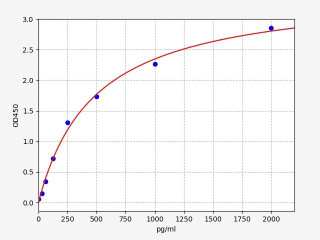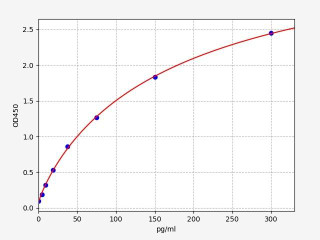Leukemia Inhibitory Factor (LIF)
Leukemia Inhibitory Factor (LIF) is a cytokine that plays a crucial role in various physiological processes within the human body. It has gained significant attention in the field of leukemia research due to its multifaceted functions and potential therapeutic applications. In this blog the molecular structure, biological sources, signaling pathways, and the role of LIF in leukemia will be discussed.
Table of Contents
Jump to a section:
What is Leukemia Inhibitory Factor (LIF)?
Leukemia Inhibitory Factor (LIF) is a glycoprotein cytokine belonging to the interleukin-6 (IL-6) family. It consists of 180 amino acids and is encoded by the LIF gene. LIF acts as a pleiotropic cytokine, meaning it exerts diverse functions in various biological processes. Leukemia Inhibitory Factor (LIF) is a glycoprotein cytokine that exerts diverse functions in various biological processes. Its primary functions include promoting hematopoiesis, modulating immune responses, and playing a crucial role in embryonic development. Specifically, LIF supports the survival, self-renewal, and differentiation of hematopoietic stem cells, facilitates the production of different blood cell types, modulates the activity of immune cells such as T cells, B cells, and natural killer (NK) cells, and influences their proliferation, activation, and cytokine production. In embryonic development, LIF is involved in embryo implantation, embryonic stem cell growth, and differentiation, as well as trophoblast differentiation and placental development, aiding in the establishment and maintenance of pregnancy.
LIF Biological Sources and Expression
LIF is produced by a wide range of cell types in different tissues. One of the major natural sources of LIF is activated lymphocytes, particularly T cells, where it is secreted in response to antigenic stimulation. In addition, bone marrow stromal cells, including mesenchymal stem cells (MSCs), have been identified as a significant source of LIF. These cells secrete LIF as part of the bone marrow microenvironment, contributing to the regulation of hematopoiesis. LIF expression is also prominent in trophoblasts of the placenta, where it plays a critical role in embryo implantation and placental development. Moreover, LIF expression can be induced by various stimuli, including inflammatory cytokines such as interleukin-1 (IL-1) and tumor necrosis factor-alpha (TNF-α), as well as hormones like glucocorticoids and estrogens. The regulation of LIF expression involves complex mechanisms of transcriptional control mediated by specific transcription factors and signaling pathways.
LIF Signaling Pathways and Receptors
LIF initiates signaling through a receptor complex composed of two subunits: the LIF receptor (LIFR) and the glycoprotein 130 (gp130) receptor. The binding of LIF to the receptor complex induces conformational changes that activate intracellular signaling pathways. The most well-known pathway is the Janus kinase/signal transducer and activator of transcription (JAK/STAT) pathway. Upon LIF binding, JAK kinases are recruited to the receptor complex, leading to their activation and subsequent phosphorylation of specific tyrosine residues on the receptor and associated STAT proteins. The phosphorylated STAT proteins then form dimers, translocate to the nucleus, and modulate gene expression by binding to specific DNA sequences. LIF can also activate other signaling cascades, such as the mitogen-activated protein kinase (MAPK) pathway and the phosphoinositide 3-kinase (PI3K)/Akt pathway, which mediate additional cellular responses depending on the cell type and context.
Role of LIF in Leukemia
Leukemia Inhibitory Factor has been found to play a significant role in leukemia, a group of cancers that affect the bone marrow and blood. Research studies have demonstrated the involvement of LIF in leukemic stem cells, which are a subset of cells within leukemia that have the ability to self-renew and give rise to a heterogeneous population of leukemic cells. LIF signaling pathways have been implicated in promoting the survival and proliferation of leukemic stem cells, contributing to the maintenance and progression of leukemia. Furthermore, studies have shown that manipulating LIF levels or targeting LIF signaling may have potential therapeutic applications in the treatment of leukemia.
LIF in Stem Cell Culture
Leukemia Inhibitory Factor (LIF) has been widely utilized in stem cell culture, particularly in the maintenance and propagation of pluripotent stem cells. Pluripotent stem cells, such as embryonic stem cells (ESCs) and induced pluripotent stem cells (iPSCs), have the remarkable ability to differentiate into all cell types of the body. LIF, along with other factors, plays a crucial role in preserving the pluripotent state of these cells.
LIF functions as a key component in defined culture media for the self-renewal of mouse ESCs. It helps to maintain the undifferentiated state of mouse ESCs by activating the JAK/STAT3 signaling pathway, which suppresses differentiation-inducing signals. LIF has also been employed in the derivation and culture of iPSCs, contributing to the generation of these versatile cells from various somatic cell sources.
LIF Related Kits

| Human LIF / Leukemia inhibitory factor ELISA Kit | |
|---|---|
| ELISA TYPE | Sandwich |
| SENSITIVITY | 18.75pg/ml |
| RANGE | 31.25-2000pg/ml |

| Human LIFR / Leukemia inhibitory factor receptor ELISA Kit | |
|---|---|
| ELISA TYPE | Sandwich |
| SENSITIVITY | 0.188ng/ml |
| RANGE | 0.313-20ng/ml |
Written by Lauryn McLoughlin
Lauryn McLoughlin completed her undergraduate degree in Neuroscience before completing her masters in Biotechnology at University College Dublin.
Recent Posts
-
The Brain's Sentinels: How Microglia Shape Neuroinflammation in Disease
The Brain's Sentinels: How Microglia Shape Neuroinflammation in Disease In the intricate landscape …28th Nov 2025 -
Unlocking the Next Wave of Cancer Treatment: The Promise and Progress of CAR-T Cell Therapy
Imagine a living drug, engineered from a patient's own immune system, that can hunt down and destroy …27th Nov 2025 -
Unlocking the Fortress: CAR-T Cell Therapy's Next Frontier in Solid Tumors
For years, the success of CAR-T cell therapy has been a beacon of hope in the fight against blood ca …26th Nov 2025


